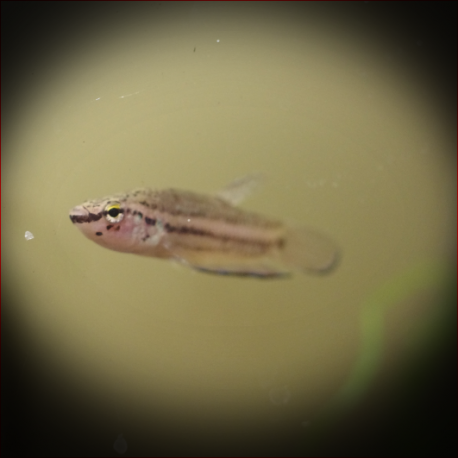More info
Datasheet
| Minimum Tank Size | 96 litres / 25.36 US gallons |
| Maximum Size | 6.0cm / 2.36inches |
| Temperature | 20°C / 68.00°F - 27°C / 80.60°F |
| Hardness | 1.01dgH / 18ppm - 5.04dgH / 90ppm |
| pH | 5.0-7.0 |
General Description
Betta Edithae, the only member of the B. edithae group within the genus Betta, is distinguished by features such as opaque or translucent branchiostegal membrane and a unique pattern of barring in its fins. With a relatively small size, short fins, and distinct coloration differences between males and females, these labyrinth fishes are part of the Osphronemidae family. Boasting a complex labyrinth organ, this species can breathe atmospheric air to some extent, making it well-equipped to survive in various environments.
Aquarium Setup
Betta Edithae thrives in a well-planted, shaded tank with plenty of surface cover. Including tall stem plants, floating vegetation like Salvinia or Riccia spp., and Nymphaea lilies creates an ideal environment. Driftwood, Cryptocoryne spp., and attachments like Microsorum or Taxiphyllum spp. to driftwood offer additional shelter. Use dried leaf litter for cover and spawning sites, aiding in microbe colony growth. Maintain a gentle air-powered sponge filter in the tank, keeping water conditions in the range of pH 5.0-7.0, hardness of 18-90ppm, and a temperature of 20-27°C (see table).
Behaviour
Betta Edithae is best suited for solitary living or with very peaceful tank mates, as it may be intimidated or outcompeted by larger or more vigorous species. While it can be maintained as a pair or in a group, interesting behavioral interactions are observed in group settings. Small cyprinids and loaches from similar natural habitats can also be compatible tank companions, provided thorough research on suitable tank mates is conducted.
Feeding and Diet
In natural settings, Betta Edithae preys on insects and small invertebrates like zooplankton. Captive specimens readily accept dried foods but should be regularly offered live or frozen options such as Daphnia, Artemia, bloodworms, and small insects like crickets or fruit flies. Overfeeding should be avoided, as Betta species can be prone to obesity.
Reproduction & Dimorphism
As paternal mouthbrooders, Betta Edithae requires a separate breeding tank for successful reproduction. Following a courtship ritual, eggs and milt are released during a unique embracing behavior. The male catches and broods the fertilized eggs in his mouth until they hatch, releasing free-swimming fry after 9-16 days. Males grow larger and display more iridescent scaling, broader heads, and extended fins compared to females.
Habitat and Distribution
Endemic to the Greater Sunda Islands region in Indonesia, Betta Edithae is found in various habitats, ranging from blackwater streams to modified canals in oil palm plantations. Its distribution includes Kalimantan, Sumatra, and nearby islands, with some populations showing distinct differences in characteristics. The species' preference for stiller, marginal areas with vegetation and root cover influences its habitat selection.

